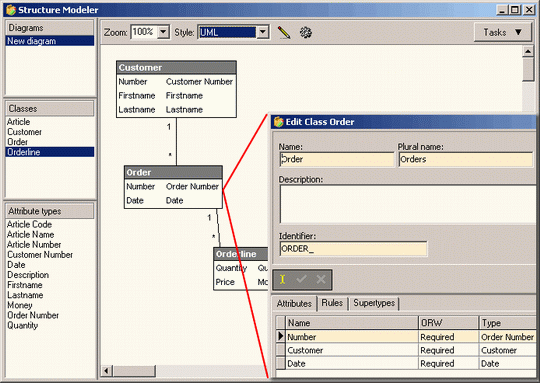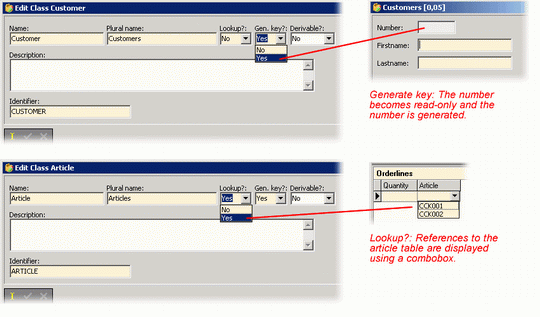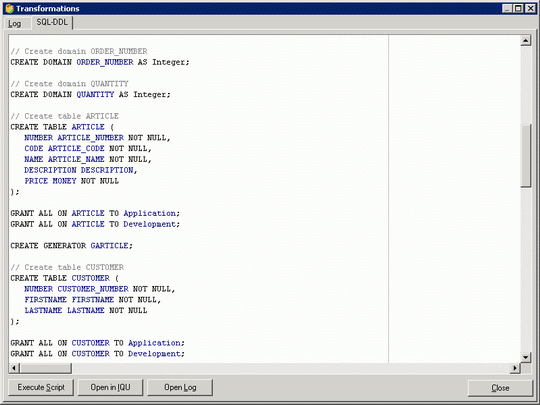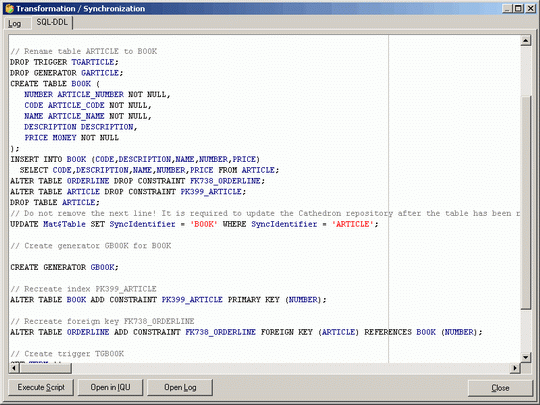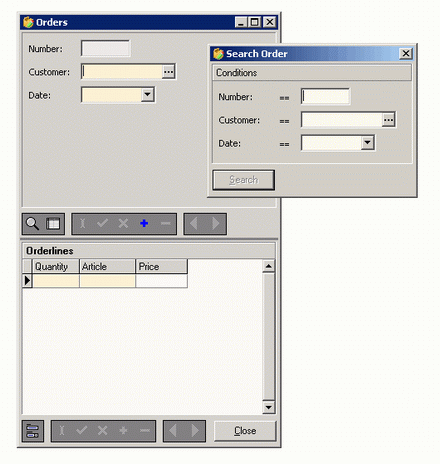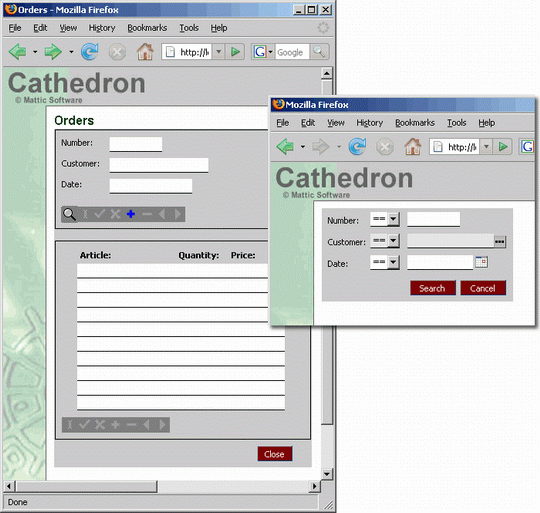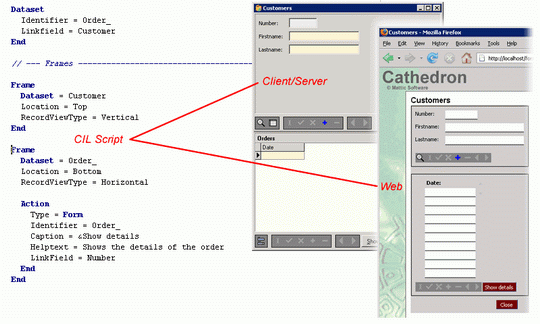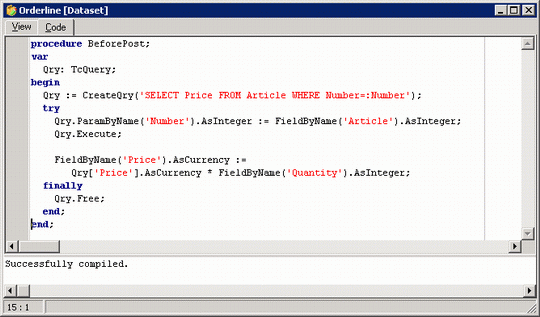Overview/Screenshots of Cathedron
Design
Designing an application with Cathedron typically starts with the creation of an information model (data model). This model describes the structure of the information to be stored and processed by the system. The model can be represented using commonly used diagram styles such as UML and ERD.
After the basic structure is defined the model can be refined by specifying properties such as generate key, lookup yes/no, short name, edit format etc. Those properties are used to generate a basic interface for the application.
Development
After the model is finished you can transform the model into a database. Cathedron will generate the proper SQL-DDL code for Firebird or InterBase. You can now review this code and execute it (within the Cathedron IDE) to create the database.
When you have changed your model Cathedron will generate a script to change the database. When possible this script will convert or keep any existing information in the database.
When the database structure has been generated you can immediately explore your application using the default forms generated by Cathedron.
The default forms offers the basic functionality required to manipulate the database. In addition to the default forms, Cathedron has two languages to create a more sophisticated application. The first language is the Cathedron Interface Language (CIL). It is a simple textual property language to specify the structure of the interface.
The second language is Pascal script, allowing you to add code to the application.
Deployment
Cathedron offers several features and utilities to deploy your applications:
- Distribution of your application does not require the distribution of a new executable. All you need is the Cathedron runtime executable.
- The ability to synchronize the development environment with the production environment and vice versa.
- Cathedron comes with tools to automate the distribution of Cathedron releases within a client-server environment .
Maintenance
A summary of the maintenance features of Cathedron:
- When you change the model of an existing database Cathedron will generate a delta SQL-DLL script. This script will only contain the SQL-DDL instructions necessary to update your system. Those instructions will attempt to automatically convert all the data in the system .
- Cathedron offers the possibility to convert existing Firebird or InterBase databases into a Cathedron compatible database .
The Mattic Communication Engine (MCE)
In addition to Cathedron the optional Mattic Communication Engine (MCE) offers the following features:
- Scheduled execution of tasks on the server. Where a tasks can be:
- a SQL script
- a Pascal script
- an executable
- backup or sweep of a database
- Sending the result of a task to a mailing list. (For example monthly report in Excel generated by a SQL-script).
- Sending the result code (success or failure) to an administrator.
- Direct (TCP-IP based) communication between clients and clients and the server.
- Logging of exceptions from clients. (A very useful way to discover bugs in your application).
- Logging of time-consuming queries that where executed on the database. (Optimizing those queries will drastically improve the performance of the entire system).
- A HTTP server. This server can be used to serve HTML pages containing Pascal script.
- The WebCat server. In addition to the features of the HTTP server, this server gives you the possibility to serve the HTML representation of your Cathedron applications to the outside world.
Click here to continue to more information about the technology of Cathedron.


